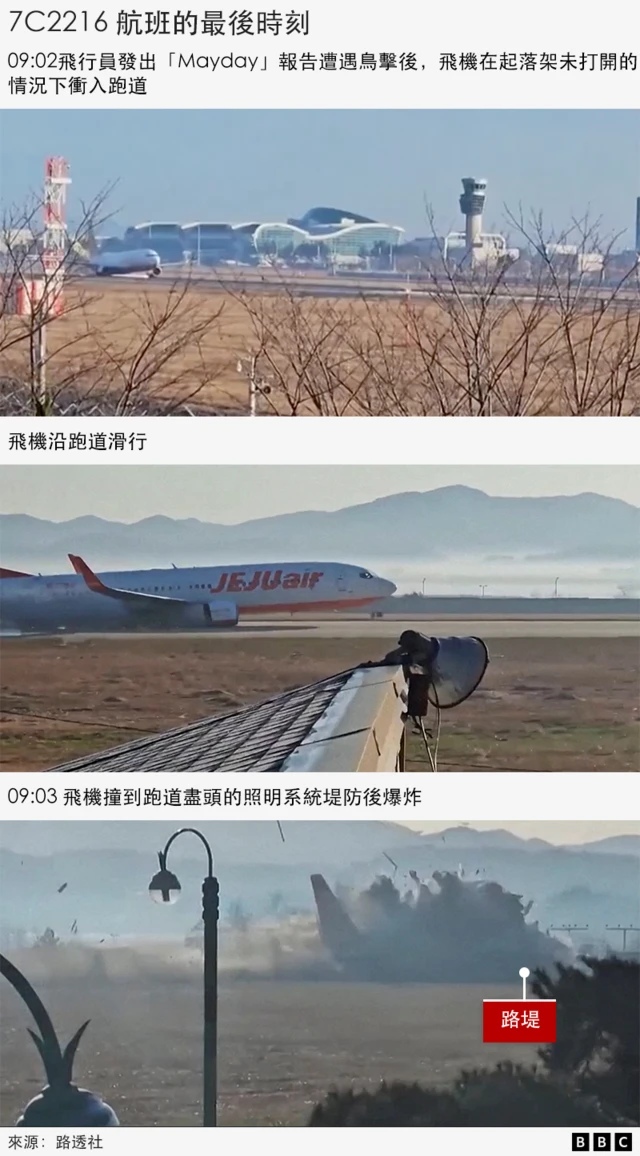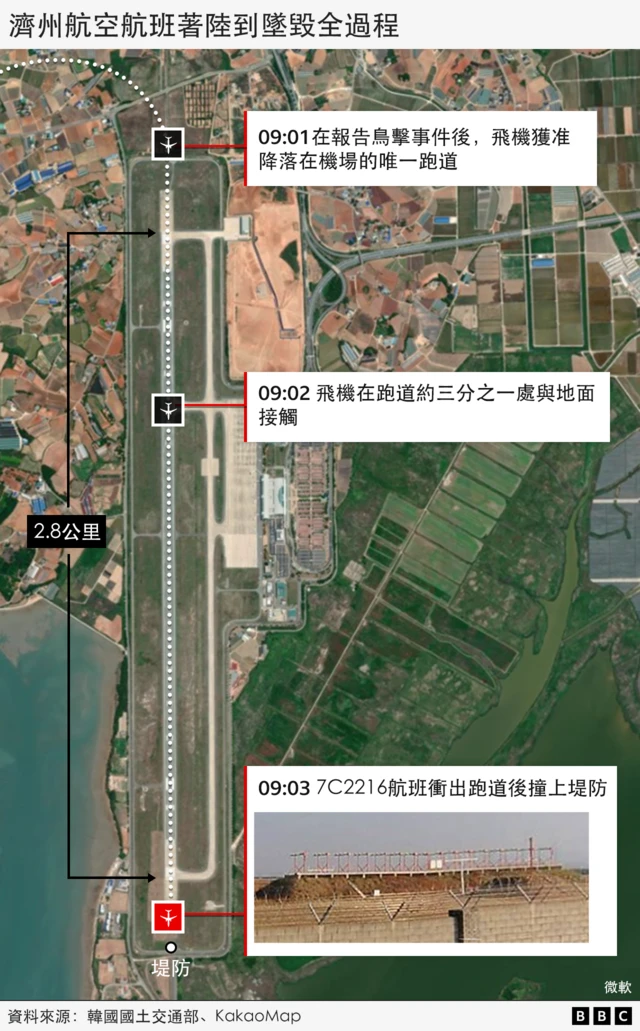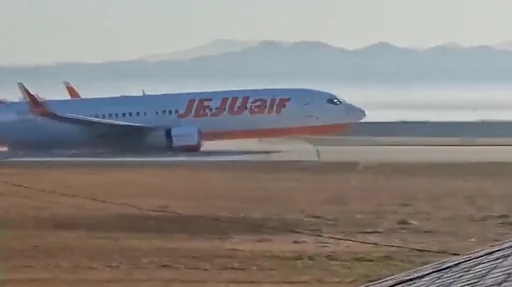Unusual concrete wall near the end of Muan Airport runway becomes focus of questioning
- David Mercer
- BBC reporter
Aviation experts are questioning an "unusual" concrete wall near the runway after a South Korean plane crash killed 179 people.
The video showed a Jeju Air plane running off the runway and crashing into the wall before catching fire at Muan International Airport.
Investigators are probing the cause of South Korea's worst plane crash in history and are considering whether the concrete wall, about 250 meters (820 feet) from the end of the runway, played a key role in the incident.
Aviation safety expert David Learmount said that without the "obstacle", the plane "would have probably stopped and most or possibly all of the passengers would have survived".
The pilot reported that the aircraft struck a bird during the initial approach and subsequently aborted the landing and requested to land in the opposite direction.
The aircraft descended along the 2,800-meter runway and flew for some distance, but appeared to land without using wheels or other landing gear.
Learmont said the landing was "like a good forced landing with no flaps or landing gear: the wings were level and the nose was not raised too high to avoid tail damage," and the plane did not suffer major damage during the taxi.
"The cause of the high number of fatalities in this accident was not the landing itself, but the aircraft hitting a very solid obstacle at the end of the runway," he said.

Christian Beckert, a Munich-based Lufthansa pilot, called the concrete object "unusual." "Normally, you don't have a wall at the end of an airport runway," he told Reuters.
According to Yonhap News Agency, the concrete object is used to house a navigation system that assists aircraft landing - called a Localiser.
The report said the 4-meter-high wall was covered with soil and protruded from the ground to ensure the locator remained level with the runway and operated properly.
South Korea's transport ministry said other airports in the country and some overseas also use concrete structures to install the equipment, but officials will investigate whether to use lighter materials that break more easily on impact.
Chris Kingswood, a pilot with 48 years' experience who has flown the same aircraft, told the BBC: "Obstacles within a certain radius of the runway are supposed to be breakable, meaning if an aircraft hits them they should break apart."
"It's certainly unusual for such a solid structure. From what I understand the aircraft was taxiing at a very high speed and flew a long way down the runway before landing, so it would have overshot the runway quite a bit... so how do you define the boundaries? That will certainly be part of the investigation."
Kingswood added: "The aircraft are not structurally strong - they have to be lightweight to fly efficiently. They are not designed to land on their belly at high speeds, so any kind of structure could cause the fuselage to break apart, which would be a disaster."https://gillspaste.com/sstvsu6tg?key=3c6a2f0c348249bd18222793323d13fd

"The fuel is stored in the wing, so if the wing ruptures, there is a significant risk of fire," he said. "Without the wall, that wouldn't necessarily happen and the outcome could be completely different."
Kingswood added that he would be "very surprised" if the airport did not meet all the requirements of the industry standard. "My guess is that if we looked at the runway perimeters of many large international airports, we would probably find a number of obstacles that could similarly be cited as posing a hazard."
Aviation analyst Sally Gethin questioned whether pilots were aware of the wall's existence, especially when the plane was approaching from a different direction than normal for landing.
She told the BBC: "We need to know, were the pilots aware that there was a solid barrier at the end of the runway?"
"If they were directed by the control tower to change the runway direction, then the black box investigation should reveal this."



Comments
Post a Comment